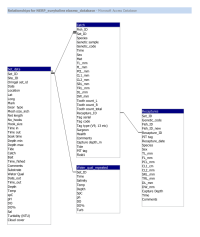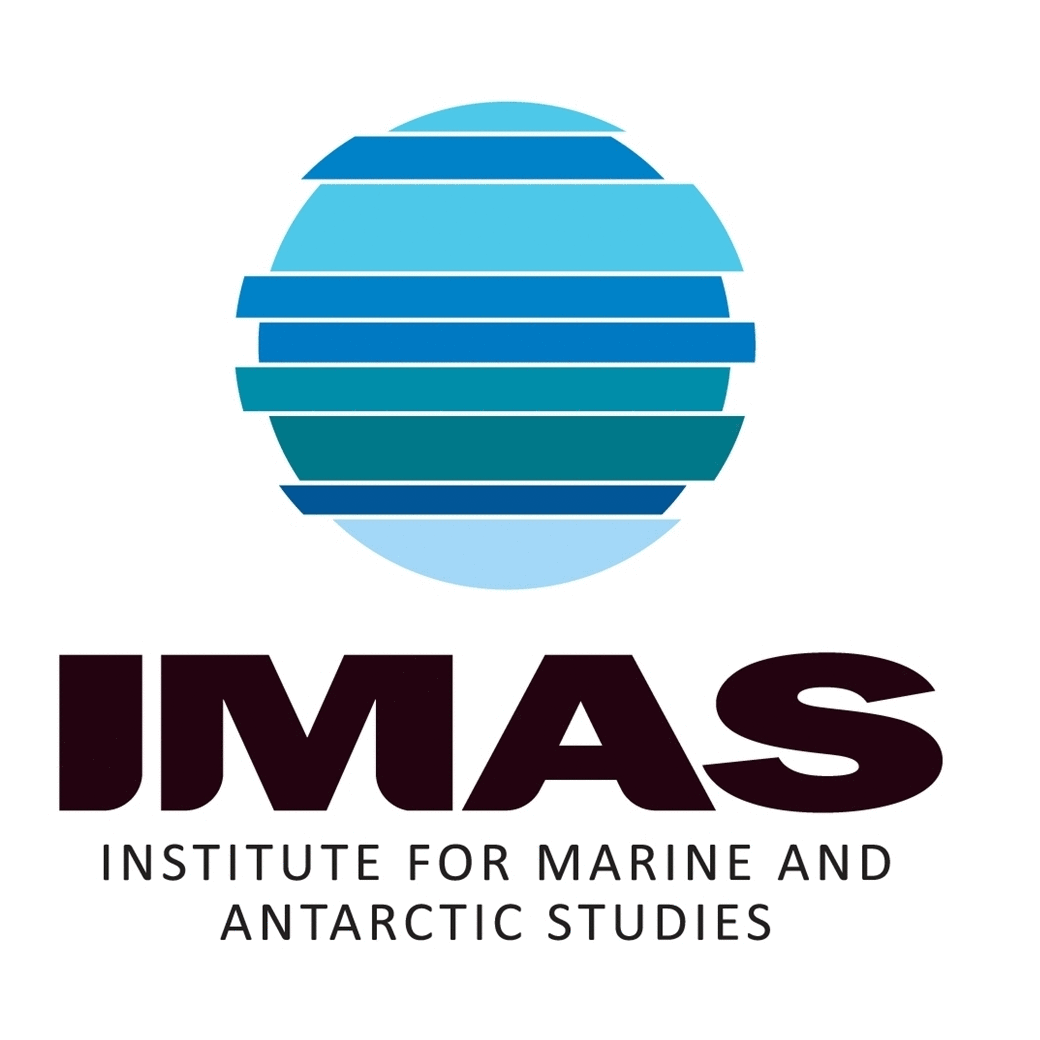2016
Type of resources
Topics
Keywords
Contact for the resource
Provided by
Years
-
The Marine Futures Project was designed to benchmark the current status of key Western Australian marine ecosystems, based on an improved understanding of the relationship between marine habitats, biodiversity and our use of these values. Approximately 1,500 km2 of seafloor were mapped using hydroacoustics (Reson 8101 Multibeam), and expected benthic habitats "ground-truthed" using towed video transects and baited remote underwater video systems. Both sources of information were then combined in a spatial predictive modelling framework to produce fine-scale habitat maps showing the extent of substrate types, biotic formations, etc. Surveys took place across 9 study areas, including the Capes region of southwest Western Australia. The area is one of the most diverse temperate marine environments in Australia. Warm, tropical waters of the Leeuwin Current mingle with the cool waters of the Capes Current, resulting in high finfish diversity, including tropical and temperate species, as well as internationally significant seagrass diversity with meadows occurring at depths greater than 40 metres. The region's geomorphology is complex with an array of intertidal and subtidal reef environments. Many marine plants and animals are endemic to the southern coast of Australia due to its long geographical isolation, with seagrass, algae and estuarine habitats functioning as spawning, nursery and feeding grounds for a wide range of invertebrates and fish. Significant numbers of marine mammals also frequent the area, including the blue whale, the largest of all marine creatures.
-

This database contains sampling effort, catch records, biological data, and water quality data for sampling and catches of elasmobranchs in northern Australian rivers, estuaries and coasts undertaken under the National Environmental Research Program (NERP) Marine Biodiversity Hub Project 2.4 'Supporting Management of Listed and Rare Species'. and the National Environmental Science Program (NESP) Marine Biodiversity Hub Project A1 'Northern Australian Hotspots for the Recovery of Threatened Euryhaline Elasmobranchs'. Surveys using gillnets and rod-and-line were undertaken in the Top End region of the Northern Territory and the Kimberley region of Western Australia. Selected animals were tagged for movement ecology, habitat use and mortality estimates (acoustic telemetry), and tissue samples were collected from all fish for molecular analyses (population genetics and close-kin mark-recapture).
-
Time Series video to support Project C3 of the Marine Biodiversity Hub NESP programme 2015/2016. The video illustrates coastal change at the Southern end of Stradbroke Island QLD, using 118 Landsat observations from within the Australian Geoscience Data Cube (AGDC) from 1987-2016.
-
Time Series video to support Project C3 of the Marine Biodiversity Hub NESP programme. The video illustrates coastal change at the Murray Mouth and Lower Lakes, SA using 104 Landsat observations from within the Australian Geoscience Data Cube (AGDC) from 1988-2013.
-
The Marine Futures Project was designed to benchmark the current status of key Western Australian marine ecosystems, based on an improved understanding of the relationship between marine habitats, biodiversity and our use of these values. Approximately 1,500 km2 of seafloor were mapped using hydroacoustics (Reson 8101 Multibeam), and expected benthic habitats "ground-truthed" using towed video transects and baited remote underwater video systems. Both sources of information were then combined in a spatial predictive modelling framework to produce fine-scale habitat maps showing the extent of substrate types, biotic formations, etc. Surveys took place across 9 study areas, including the Capes region of southwest Western Australia. The area is one of the most diverse temperate marine environments in Australia. Warm, tropical waters of the Leeuwin Current mingle with the cool waters of the Capes Current, resulting in high finfish diversity, including tropical and temperate species, as well as internationally significant seagrass diversity with meadows occurring at depths greater than 40 metres. The region's geomorphology is complex with an array of intertidal and subtidal reef environments. Many marine plants and animals are endemic to the southern coast of Australia due to its long geographical isolation, with seagrass, algae and estuarine habitats functioning as spawning, nursery and feeding grounds for a wide range of invertebrates and fish. Significant numbers of marine mammals also frequent the area, including the blue whale, the largest of all marine creatures.
-
The Marine Futures Project was designed to benchmark the current status of key Western Australian marine ecosystems, based on an improved understanding of the relationship between marine habitats, biodiversity and our use of these values. Approximately 1,500 km2 of seafloor were mapped using hydroacoustics (Reson 8101 Multibeam), and expected benthic habitats "ground-truthed" using towed video transects and baited remote underwater video systems. Both sources of information were then combined in a spatial predictive modelling framework to produce fine-scale habitat maps showing the extent of substrate types, biotic formations, etc. Surveys took place across 9 study areas, including Rottnest Island, a popular family holiday destination just 20 km off the Perth coast. One of the main drawcards of the island is the diverse marine life inhabiting the surounding waters, which Western Australian locals and tourists can experience by snorkelling, diving, boating and fishing. The marine environment around Rottnest includes seagrass meadows, kelp-covered reef tops, coral patches, and sponge gardens in deeper water. As a result of the warm, southward flowing Leeuwin Current, the island represents the southern limit of the distributions of many tropical corals and fish. The marine life around Rottnest therefore represents a unique mix of tropical and temperate species and habitats.
-

This record provides an overview of the scope and research output of NESP Marine Biodiversity Hub Project C4 - "The National Outfall Database project (Clean Ocean Foundation)". For specific data outputs from this project, please see child records associated with this metadata. -------------------- The National Outfall Database (NOD) project addresses the need of government and community to understand the impacts on health and the ocean environment that occur from sewerage outfalls around Australia. Planned Outputs • A publicly accessible national outfall database and reports. • A ranking of the outfalls (and sewerage treatment systems) according to health and impact criteria with peer review of the ranking system and resulting ranking outcomes. • Comparison of geographical regions in sewerage volume and pollution impact. • Mapping of the database. • Community engagement in conduct of this research and consumption of the outcomes.
-
The Petrel Sub-basin Marine Environmental Survey GA-0335, (SOL5463) was undertaken by the RV Solander during May 2012 as part of the Commonwealth Government's National Low Emission Coal Initiative (NLECI). The survey was undertaken as a collaboration between the Australian Institute of Marine Science (AIMS) and GA. The purpose was to acquire geophysical and biophysical data on shallow (less then 100m water depth) seabed environments within two targeted areas in the Petrel Sub-basin to support investigation for CO2 storage potential in these areas. This dataset comprises an interpreted geomorphic map. Interpreted local-scale geomorphic maps were produced for each survey area in the Petrel Sub-basin using multibeam bathymetry and backscatter grids at 2 m resolution and bathymetric derivatives (e.g. slope; 1-m contours). Five geomorphic units; bank, plain, ridge, terrace and valley, were identified and mapped using definitions suitable for interpretation at the local scale (nominally 1:10 000). Maps and polygons were manual digitised in ArcGIS using the spatial analyst and 3D analyst toolboxes.
-

This record provides an overview of the scope and research output of NESP Marine Biodiversity Hub Project C2 - "Continental-scale tracking of threats to shallow Australian reef ecosystems". For specific data outputs from this project, please see child records associated with this metadata. -------------------- The project will integrate Australia’s largest, most detailed datasets of shallow-water tropical and temperate marine biodiversity, and assess how pollution, fishing, rising sea temperatures and introduced species are impacting associated natural values. An initial outcome will be the identification of state-of-the-environment indicators for inclusion in the 2016 State of the Environment report, with subsequent activities aimed at contributing additional data products needed for other NESP projects, Parks Australia, and the Essential Environmental Measures initiative. The project will also describe a national shallow-water baseline of biodiversity in Commonwealth Marine Reserves for assessment of change through the long term. Planned Outputs Publications describing: • Environmental values at all sites investigated in Commonwealth waters by Reef Life Survey divers • Compatibility of survey data obtained through LTMP, RLS and LTMPA programs, and corrections factors needed when linking outputs of these monitoring programs • Time series data depicting interannual variation over the past two decades in ecological indicators specific to individual threats • Relationships between anthropogenic stressors and reef condition, with emphasis on impacts of sewage and heavy metal pollution, fishing, warming sea temperature, urbanisation and introduced species • Sensitive and cost effective indicators of threats to environmental condition. • Coherent marine ecological data streams that feed into SoE reporting, the Essential Environmental Measures initiative, and future evaluation of Commonwealth Marine Reserves.
-
The Marine Futures Project was designed to benchmark the current status of key Western Australian marine ecosystems, based on an improved understanding of the relationship between marine habitats, biodiversity and our use of these values. Approximately 1,500 km2 of seafloor were mapped using hydroacoustics (Reson 8101 Multibeam), and expected benthic habitats "ground-truthed" using towed video transects and baited remote underwater video systems. Both sources of information were then combined in a spatial predictive modelling framework to produce fine-scale habitat maps showing the extent of substrate types, biotic formations, etc. Surveys took place across 9 study areas, including Geographe Bay in the southwest Capes region. The marine environment at this location varies from extensive seagrass meadows in protected waters, to kelp-dominated granite and limestone reefs in areas of high wave energy. A small number of corals are also found throughout the region, reflecting the influence of the southward flow of the Leeuwin Current. The fish fauna is also diverse, with a high proportion of endemic species.
 IMAS Metadata Catalogue
IMAS Metadata Catalogue